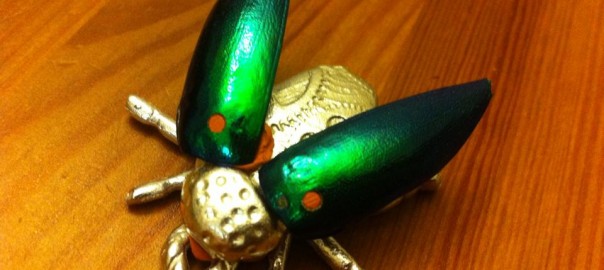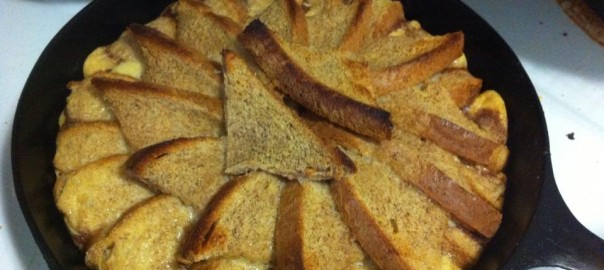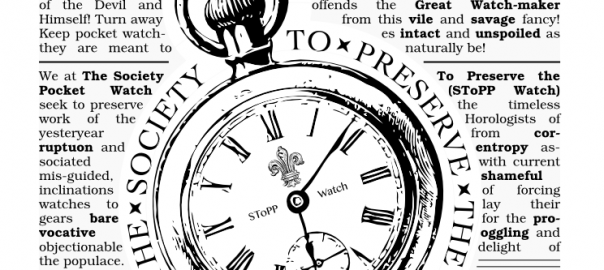More to come as this project progresses.
Peace,
-Steve

More to come as this project progresses.
Peace,
-Steve

UPDATED: The February 2014 Great Panic Toast Cookoff begins on February 13th. Details below!
“Into each life, some snow must fall, but the denizens of the little state of New Jersey know there is but one response… keep calm and toast on.
When the snow comes down, each home becomes an island with its own insular cuisine. Until now, we’ve just assumed that one family’s ‘panic French toast’ is the same as another’s. Today we find out for sure. Use the marvel of modern technology to share your secret French toast recipes and photos for a chance to win one bottle of (Vermont) maple sugar, one trophy creamer, and bragging rights over all of Jerseydom in the coming year! You know you want to – what else are you going to do when all cooped up?”
Also, feel free to spread the word by changing your Facebook profile image to one of these:
Peace,
-Steve
Required Disclaimer: This contest isn’t affiliated with or endorsed by Facebook.

Haven’t you noticed that right before a snowstorm people act like this:
And then wondered, “What happens to all of that bread and milk, anyways?”
Well, allow me to share with you one of New Jersey’s favorite snowstorm pastimes:
Ingredients:
Instructions:
Enjoy!
Peace,
-Steve

I’ve always been one who has scratched his beard over the whole “War on Christmas.” Aside from the occasional, rare, and laughable “Really, now?” moments that crop up in the press (like the whole “How the Grinch Stole the Holiday” debacle), Christmas is vibrantly alive and well in the United States. One only needs to walk down a main street to see the festive decorations and lights adorning nearly every storefront and front yard.
Regardless, sometimes when I discuss how I wish people “Happy Holidays” some people get indignant. “What other holidays are there other than Christmas? Especially this year when Chanukah is over and done with!”
As a Christian, when I say Happy Holidays, I am acknowledging my own Christian tradition.
Christmas is but one holiday on the Christian calendar that falls around this time of year, so allow me to show you precisely what I mean. When I say Happy Holidays I am personally referring to:
So when I say “Happy Holidays” this time of year, as a Christian I am referring to three seasons and over 10 holidays, at least 3 of which are fairly major on the Christian calendar. Christmas is but one of them, and the shortest season of the three. 🙂
Also not in that list are civil holidays like New Year’s Day (which lands on the same day of the Feast of the Holy Name) and Boxing Day (mainly for my friends in the Commonwealth, piggybacking on The Feast of St. Stephen). So there are a few more.
If you want to talk about a more true-to-form “War on Christmas” I personally find it irksome that Christmas music — rather than Advent carols — are played all throughout Advent, and after Christmas Day they simply vanish, as if the other 11 days don’t exist. Episcopalians tend to celebrate all 12 days with fervor, sometimes to the point of odd stares. However, I’ve found that odd stares are best dealt with by means of education. Simply start singing a few lines of “The 12 Days of Christmas” and they’ll say, “Well, I’ve just had an epiphany! That’s what that song is about!”
But then then I tell them that they’re jumping the gun: Epiphany’s the next season. 😉
Peace,
-Steve
(PS. It also doesn’t hurt that at around this time of year there are other holidays celebrated by other religions. Just sayin’. 😉 )

You have to admit: The Archbishop of Canterbury (Rowan Williams) does look a heck of a lot like the Headmaster of Hogwarts (Albus Dumbledore). 🙂
Peace,
-Steve
Today we had our first big sighting, kicking off mushroom season officially.
More to come soon!
Peace,
-Steve
So even with the bad economy, there is one tradition that we’ve turned into a weekly affair that adds a bit of whimsy to our everyday lives, and to those we purchase everyday items from: Dollar coins.
A Little Bit of History
Lots of people remember the Susan B. Anthony dollar, a coin that everyone (apparently) disliked. It looked and felt like a quarter with its silver color and rolled edge, and as such was often confused for a quarter in circulation. Because of this, they only were minted for three years (1979-1981) but since they became so popular with vending machine manufacturers and train and light rail systems that the Treasury nearly ran out of them in the late 1990s, which is when Congress discussed minting the Sacagawea Dollar to replace Susans in 2000.
The fact of the matter is that a full implementation of the Dollar coin would save nearly $500 million a year by a simple matter of resources necessary for circulation. Each dollar bill costs about 9 cents to manufacture where each dollar coin takes about 20 cents. However, a dollar bill’s lifespan in circulation is about 18 months before it falls apart, where a dollar coin could last 30 years… or more.
This means that keeping a dollar bill in circulation for 30 years costs $2.70 vs the 20 cents of the dollar coin.
(That’s a savings of ~8.3 cents per year, per coin. Over millions of coins, that is significant.)
This however, scared paper manufactures that supplied the cotton/linnen components for the dollar bill enough to form a collation known as “Save the Greenback” which lobbied heavily to pass the “Save the Greenback Act” which would ensure that the dollar bill would not be eliminated. In the proposal by Rep. Thomas F. Davis (R):
No surprise that the the Act was never passed.
It almost seems that in spite of the proposed Act that the need for more coins in the Treasury caused Congress to order another strike of Susan B. Anthony Dollars in 1999.
Then in 2000 there came the Sacagawea Dollar which completely re-worked the look and feel of the dollar into a brilliant, thick golden coin, while keeping its metallic signature identical (so that vending machines that could accept Susan B. Anthony dollars could also accept them without any need for an upgrade).
Still feeling weird about the Susan B. Anthony dollar, the Sacagawea Dollar received mixed reviews. Some people loved it. Others hated it. Polls even to today are mixed (but I have some theories about that).
Giving the dollar coin its latest try, in 2005, Congress enacted Pub.L. 109-145 to give a new face… or rather new faces to the dollar coin: All of our (dead) Presidents.
In two years from the Act, the plan was to release 4 (dead) Presidents a year (similar to the State Quarters) until all eligible Presidents were honored. So in 2007 George Washington, John Adams, Thomas Jefferson and James Madison were engraved onto the obverse, where the Statue of Liberty is on the reverse. Also at this time, the minting mark and date were no longer struck into the face of the coin, but instead were engraved along the edge.
And this year (2011) we’re expecting to see Johnson, Grant, Hayes and Garfield.
So Why Do I Use $1 Coins?
First of all, I love how my kids react to them.
What child (or bit of child in all of us?) does not like a pile of golden treasure?
This past Christmas I gave little sacks of 10 shiny $1 coins to my daughters, nephews and daughters’ best friends that were mixed with glass “gemstone” blobs and tied with a little “guardian” dragon figurine at the top.
Not only that, but they’re a great tool to teach history. Every time we get a random pile of them from the bank, I sit down with my eldest daughter and we go over each of them, sorting the Presidents out. It’s gotten to the point that she’ll be able to identify the them on sight and when she put together one of her Presidential puzzles we got her from Barnes & Noble, she’ll exclaim, “Abba! It’s John Adams! Like on my coins! Sit down, John!” (that last bit she picked up from the musical 1776 🙂 ).
It literally gives weight to their purchases, and lets them understand the value of a dollar.
Second, it’s patriotic and saves our country money.
As I mentioned, each dollar coin that’s in circulation saves our country on average a little more than 5 cents a year. That kind of savings adds up quickly. If steps were taken for us to adopt the dollar coin as our base currency and do away with the dollar bill (as many other countries have done with their base currency), we could save a very significant sum of money.
Third, it saves *me* money.
This is a little known fact but the government currently has in place a direct shipping program to get dollar coins in circulation.
You can order them in bulk denominations of $250 and get free shipping.
Now, if you have a credit card that has “cash back” rewards…
My debit card gives me $1 back for every $100 I spend on anything when I use the card with a credit card transaction. This means that for every $1,000 of coins I order from the Mint, that I get back $10. To put this into perspective, my savings account (which is a lot more than $1,000) gives me a measly couple bucks of interest every year, so purchasing and using $1 coins in this manner is a better investment than what I’m currently getting from my bank, and since we use the coins for our everyday purchases, we comply with the circulation program.
Of course if you want to give this a try, many credit cards with “cash back” systems do not count cash-like purchases towards your cash back totals. You’ll have to check your cardholder agreements.
Also if you purchase coins through this program and deposit them directly into your bank account in an effort to order more, you’ll be in violation of the program (which has some stiff penalties). The coins you order through this program are meant to be used, not hoarded or cashed-in.
For those of you who think this is “cheating the system” let’s go over the math:
Let’s first make a few reasonable assumptions:
- A 19 pound package sent via UPS standard delivery costs about $30 (a high-end estimate).
- The credit card charges the government $20 (2%) on the transaction (a high-end estimate).
- Each coin put in circulation saves ~$0.083 a year times 1,000 coins = $83.
- So the first year, the savings to the government is $33.
- The the additional 29 years in circulation, the savings amounts to $0.083 a year times 1,000 coins times 29
= ~$2,440 total government savings over 30 years.It’s money that saves money.
In either case, this is some food for thought.
Peace,
-Steve